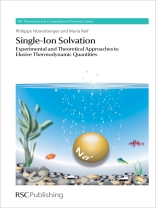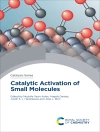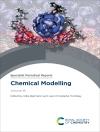Ions are ubiquitous in chemical, technological, ecological and biological processes. Characterizing their role in these processes in the first place requires the evaluation of the thermodynamic parameters associated with the solvation of a given ion. However, due to the constraint of electroneutrality, the involvement of surface effects and the ambiguous connection between microscopic and macroscopic descriptions, the determination of single-ion solvation properties via both experimental and theoretical approaches has turned out to be a very difficult and highly controversial problem. This unique book provides an up-to-date, compact and consistent account of the research field of single-ion solvation thermodynamics that has over one hundred years of history and still remains largely unsolved. By reviewing the various approaches employed to date, establishing the relevant connections between single-ion thermodynamics and electrochemistry, resolving conceptual ambiguities, and giving an exhaustive data compilation (in the context of alkali and halide hydration), this book provides a consistent synthesis, in depth understanding and clarification of a large and sometimes very confusing research field. The book is primarily aimed at researchers (professors, postgraduates, graduates, and industrial researchers) concerned with processes involving ionic solvation properties (these are ubiquitous, eg. in physical/organic/analytical chemistry, electrochemistry, biochemistry, pharmacology, geology, and ecology). Because of the concept definitions and data compilations it contains, it is also a useful reference book to have in a university library. Finally, it may be of general interest to anyone wanting to learn more about ions and solvation. Key features: – discusses both experimental and theoretical approaches, and establishes the connection between them – provides both an account of the past research (covering over one hundred years) and a discussion of current directions (in particular on the theoretical side) – involves a comprehensive reference list of over 2000 citations – employs a very consistent notation (including table of symbols and unambiguous definitions of all introduced quantities) – provides a discussion and clarification of ambiguous concepts (ie. concepts that have not been defined clearly, or have been defined differently by different authors, leading to confusion in past literature) – encompasses an exhaustive data compilation (in the restricted context of alkali and halide hydration), along with recommended values (after critical analysis of this literature data) – is illustrated by a number of synoptic colour figures, that will help the reader to grasp the connections between different concepts in one single picture
विषयसूची
Chapter 1: Introduction;
Chapter 2: Fundamental problems;
Chapter 3: Concepts and definitions;
Chapter 4: Methods;
Chapter 5: Results;
Chapter 6: Conclusion
लेखक के बारे में
Walter Thiel studied chemistry at the University of Marburg (West Germany) from 1966 to 1971, where he subsequently obtained his doctorate with A. Schweig in 1973. After a post-doctoral stint at the University of Texas at Austin with M. J. S. Dewar (1973–1975), he obtained his habilitation from the University of Marburg in 1981. He was appointed Professor of Theoretical Chemistry at the University of Wuppertal (West Germany) in 1983 and Professor of Chemistry at the University of Zurich (Switzerland) in 1992. In 1987 he was a visiting professor at the University of California at Berkeley. Since 1999, he is a director at the Max Planck Institute for Coal Research in Mülheim an der Ruhr (Germany) and an honorary professor at the neighbouring University of Düsseldorf (Germany) since 2001.












